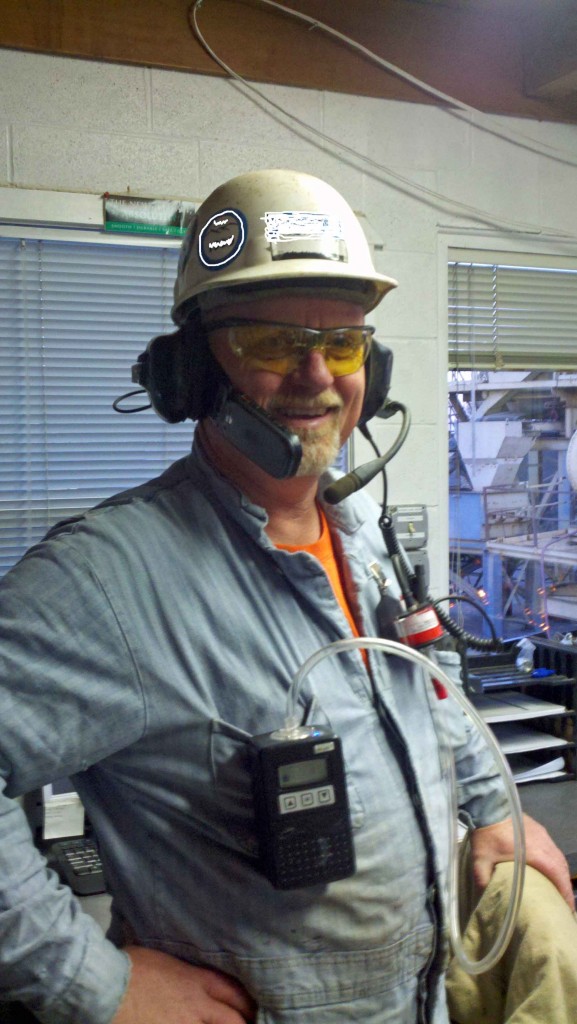Entries tagged with “safety”.
Did you find what you wanted?
Mon 22 Oct 2012
As you might be aware, there is a loudness of noise which your ears cannot be protected against. Your body’s system of preventing the sound waves from entering your ear are just too much for it to handle. As the noise (sound pressure) hits your inner ear the bones convert the physical energy (noise) into a chemical & neurological process so you are able to hear. Ear plugs and ear muffs are not sufficient enough to protect against the amount of noise exposure.
However! Sometime in the future we might have a pill to prevent this type of hearing loss.
Researchers have found that the chemicals, D-methionine, ebselen & N-acetylcysteine, battle chemical stress on your ears.  We are still a long way from being able to take a pill to avoid hearing loss. They must go through more testing and the FDA approvals.
But, isn’t that cool!?
Wed 17 Oct 2012
Posted by admin under Admin Controls, Air Monitoring, Concrete, confined space, Engineering Controls, Exposure, Federal OSHA, fit testing, Hazard Communication, Hearing Conservation, hearing protection, Management, Noise, OSHA, Permit Required, Personal Protective Equip (PPE), Respirators, Safety Policies, Safety Programs, Silica, Training, Uncategorized, ventilation
Comments Off on Ready Mix Drum Chipping
If you operate a ready-mix plant and have concrete trucks, you are aware of this process. Once a year (hopefully, only once) a person must climb into the drum of the ready-mix truck and chip off excess concrete. What happen during regular use, is that some concrete hardens, which usually sets-up over and around the blades. Access into the drum is by either the 3×4 hole in the side, or down the chute.
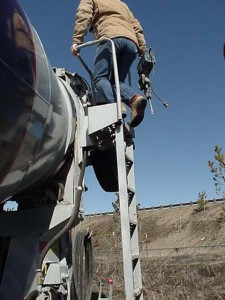
Yes, it is a confined space (def’n: 1. large enough to enter, 2. not designed for occupancy, and 3. limited entry/egress).
Here are a list of the possible hazards:
- silica dust (from chipping concrete)
- noise exposure
- hazardous atmosphere (curing concrete uses up oxygen, which we DO need BTW)
- slipping hazard (drum is round inside)
- heat stress (if you’re trying to do this activity in the summer)
- eye hazard (chipping)
- electrical hazard (if you’re using water & have an electric hammer)
- lock out / tag out (if the truck drives away, or if the barrel starts turning)
There are many resources available (see below). Some things to keep in mind; ventilation (fans, etc) to control the airborne silica dust are usually not effective (too much dust versus exhaust). Water controls are best, but you must limit the amount of water and the direction of the sprayer. I suggest looking at what others have done.
Keep in mind, if you perform this activity you will need (as a company):
- respiratory program (medical, fit test, written plan)
- confined space program (multi gas meter, written program, attendant?)
- lock out /tag out policy or procedures
- training (for each of the above, and for this specific activity)
At this point I know what my contractor-friends are thinking…I will subcontract this out!  ha. If you do, please make sure your sub is doing it right.
Resources:
Georgia Tech – good presentation & guidance
Georgia Tech/OSHA – Safe Work Practices (in Spanish too!)
Teamsters H&S hazards & controls
Illinois DCEO – Consultation on ready mix cleaning
Tue 16 Oct 2012
Posted by admin under Lead
Comments Off on You pirates be careful out there…

Chinese made pirate costumes were seized due to high lead (Pb) being found in them. CNN reported that levels were 11x over the allowable level (100 parts per million) by the consumer safety products division. The NBC news video can be found here, and they reported 40x the limits.
Fri 12 Oct 2012
Posted by admin under ACGIH, Air Monitoring, Chemical Exposure, Exposure, industrial hygienist, Management, PEL (Perm Exp Limit), TWA
Comments Off on Air Monitoring – Multiple samples throughout the day
When measuring by air sampling for a job task, or an employee’s personal exposure, how many samples should you take?
Sometimes it is easier to place one filter cassette (or media) on the employee for the duration of their day.  At the end of the shift, you collect your equipment, mail it to the lab, and they spit out a 8-hour time weighted average (8-hour TWA). This is simple and easy to understand.
However, if you have the time and resources, it is usually beneficial to obtain multiple samples throughout the day. Taking multiple samples allow you to:
- obtain peaks, lows, and anomalies.
- look at: set up & clean up activities (separate from daily tasks)
- measure multiple employees doing the same task (to better capture the job task)
- calculate your own time weighted average
- capture short term exposure levels (STELs), or excursion limits *
- choose appropriate PPE for short duration tasks
- determine if employees are “falsifying” the data (skewing the data high or low)
- reduce filter overloading (in some cases)
There are some reasons NOT to obtain multiple samples:
- collection limit constraints (sometimes the method of sampling does not allow for this type of multiple sampling)
- it can be costly
- it is very time consuming (and nearly impossible, if you have multiple pumps on multiple employees throughout the site)
- difficulty interpreting the data (the math, the inferences, etc)
If you are hiring an industrial hygienist to perform air monitoring, ask about multiple samples. It might be slightly more expensive, but the information and data might be worth the cost.
*ACGIH recommends that if the compound does not have a STEL, all airborne levels should not exceed 3x the 8-hour TWA as an excursion limit.
Thu 4 Oct 2012
Posted by admin under ACGIH, Exposure, Hazard Communication, Hearing Conservation, hearing protection, Management, PEL (Perm Exp Limit), Personal Protective Equip (PPE), Safety Policies, Safety Programs, Training, TWA
Comments Off on Do we need a hearing conservation program?
Yes. If you are in construction, I recommend it. Here’s why:
First, the rules. OSHA does NOT have a specific construction standard for hearing conservation. Why does this matter? Well, the current OSHA rules state that if you have 1 day (that’s only one day) of average noise level above an average of 85 decibels A-weighted (dBA),  called the Action Limit, you are required to start a program. Obviously noise levels vary on construction jobsites. I’d guess that most projects have at least one day of levels above 85dBA’s.
called the Action Limit, you are required to start a program. Obviously noise levels vary on construction jobsites. I’d guess that most projects have at least one day of levels above 85dBA’s.
And, these particular OSHA rules are terrible. Well, they are terrible if you care about your hearing. (see my earlier post). The rules are simply not protective enough. If you are exposed to noise for 8-hours a day at 90 dBA (the OSHA average exposure limit) you WILL have hearing loss (this is without hearing protection). Does that seem like a very protective rule? Â I’ve heard talk about them changing it, but…I doubt it will ever happen.
Second, let’s consider cost vs. reward. To start a hearing conservation program you must measure your employees hearing , called audiometric testing (and do a few other things). It costs approximately $20/employee to do this per year. Compare this with the average claim (of hearing loss) cost of around $20,000. So, if you have 20 employees, and it costs you $400/year…it takes about 50 years to pay yourself back for NOT starting a program. ($20,000/400= 50 years)
Third, consider your employees. Having their hearing checked may seem like a hassle and a worthless exercise, but, some will appreciate it. I’ve found that employees like to know how they are hearing. It’s good if your employer cares how well you hear. It’s also a yearly reminder in hazard awareness to noise.
Because in construction, we know there’s noise!
If you’re dead-set on NOT having a program, you’ll need documented noise dosimetry for each employee, job task, and possible overexposure above 85 dBAs. It is possible  for a construction company to avoid having a program, but you have the burden to prove there isn’t noise. Call your favorite industrial hygienist for help.
Tue 2 Oct 2012
Posted by admin under Dust, Engineering Controls, industrial hygienist, Management, ventilation
Comments Off on Calculate Air Changes per Hour
The first question is, “why is this useful?“. Well, generally speaking, it is helpful to know if you are getting bare-minimum airflow, or if you are creating a wind tunnel on your project. Since many construction projects are not able to mobilize until the last minute, it is useful to make some rough guesstimates and calculate the airflow in the room. One squirrel-cage fan isn’t going to ventilate a warehouse, and 5 of them in a manhole will make welding impossible.  so…moving on.
Air changes per hour (ACH) is a function of the room size and the airflow into/out of the room. It is simply the number of times the volume of air is changed out over a one hour time period. One reason this calculation is so attractive to use is because there are recommended exchange rates for different environments. Some of them can be seen in the picture, the rest can be found here.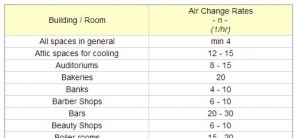
To calculate you must know:
- A = Volume of room in cubic feet (ft3)
- Q = Air flow of your fan (s) in cubic feet per minute (CFM)
Rather than reinvent the wheel Wiki has a good summary.
Caveat/Disclaimers. There are quite a few…so be careful.
- Mixing. The air never really mixes when you are exchanging air in this manner. It is dilution ventilation. So,
- Never use this method for any hazardous source, and
- Never use this for any carcinogens (asbestos, benzene, etc).
- Airflow into & out of the space is required, and is never ideal. Make sure there is space for the air to actually exchange.
- Make sure your fans work properly and do provide the manufacturers output.
Mon 24 Sep 2012
Posted by admin under Air Monitoring, Asbestos, Management, OSHA, Safety Programs, Training
Comments Off on I have asbestos, but it is less than 1%.
Assume your general contractor reports that he has found a material (floor tile, popcorn ceiling, etc) with less than 1%. He wants you to remove it with the rest of the demolition because, as you know, “…if it’s less than 1%, it’s NOT considered asbestos containing!”.
Are you ok to remove it?
Yes, and no. There is more to consider. The “1% rule” (as it’s called) as it is called states that they only regulate asbestos containing materials if they contain more than 1% of asbestos. Here are a few other considerations:
- OSHA definition. Don’t get stuck on the definition. If you have employees, you must still follow parts of the OSHA rules. At a minimum, you must train your employees, work practices, clean-up and disposal requirments. More details on training here.
- How were the samples taken? If one bulk sample shows less than 1% asbestos, you still might have a problem. According to the EPA/AHERA sampling rules, some types of materials must have up to 7 samples taken. This rule is in place because, back in the day, asbestos was added to joint compound (or anything similar) and it could really vary in amount according to where you take the sample. In addition, OSHA does not allow for composite sampling (combining the layers).
- Do you know that 0.99% asbestos is still bad for you? Asbestos is a carcinogen. The greater the exposure, the greater the risk of disease. Any exposure could be the one to cause the disease. If the material is friable and you are disturbing it, I would NOT recommend performing that activity. Hire an abatement contractor.
- Finally.Let’s assume it’s non-friable, you are not going to disturb it (when removing it) and it’s less than 1%. What will you do if your neighbor next door decides to call OSHA/EPA? Do you have a written plan and procedure? Have your employees been trained on the hazard? How to remove it? How to dispose of it? …Sometimes bad publicity will get you in worse trouble than any monetary fine.
 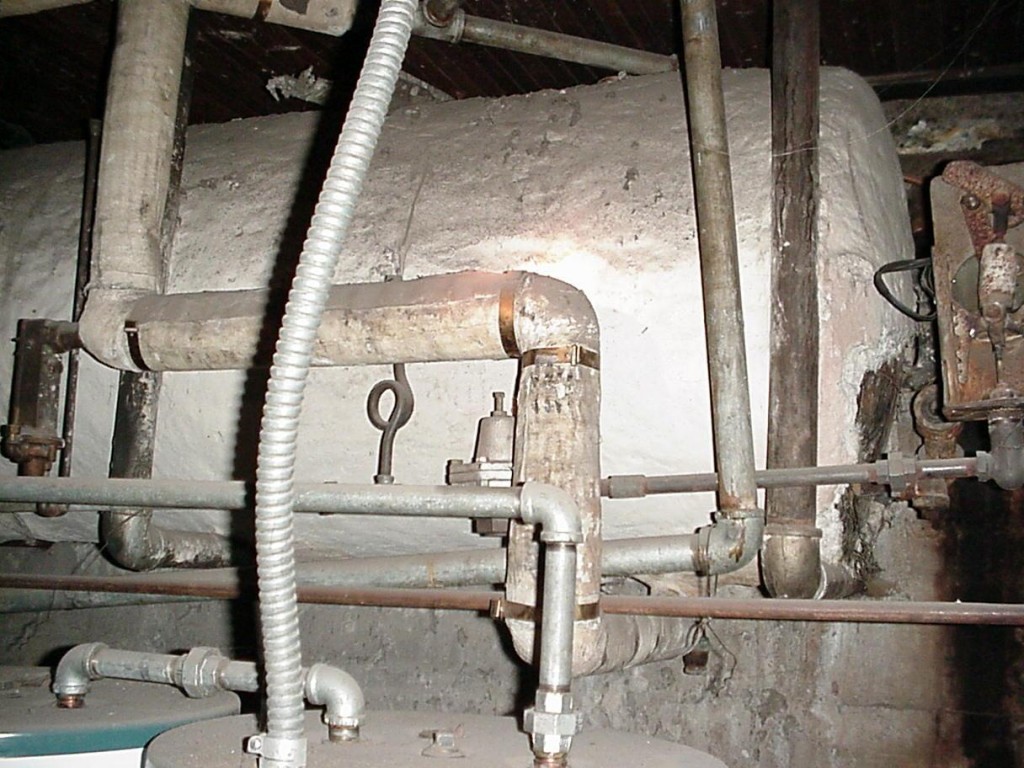
Fri 21 Sep 2012
Posted by admin under Federal OSHA, GHS, Hazard Communication, MSDS, Safety Programs, Training
Comments Off on GHS – MSDS & your HAZCOM training
The new standard for material safety data sheets (MSDS) which incorporate the global harmonization system (GHS) rules are coming.
Federal OSHA has approved the rules, and in our state, Oregon, they have been proposed, with an adoption to take place in December 2013.
It’s time to panic!…Â No. Not really.
Most employers will have until December of 2013 to implement the rules. OSHA will be publishing additional (and hopefully, helpful) information on what to do. For most employers it will mean you need to do a few major things:
- Train your employees on the new rules
- Reclassify (rename) the hazards, mainly the flammable ones, which have changed the most.
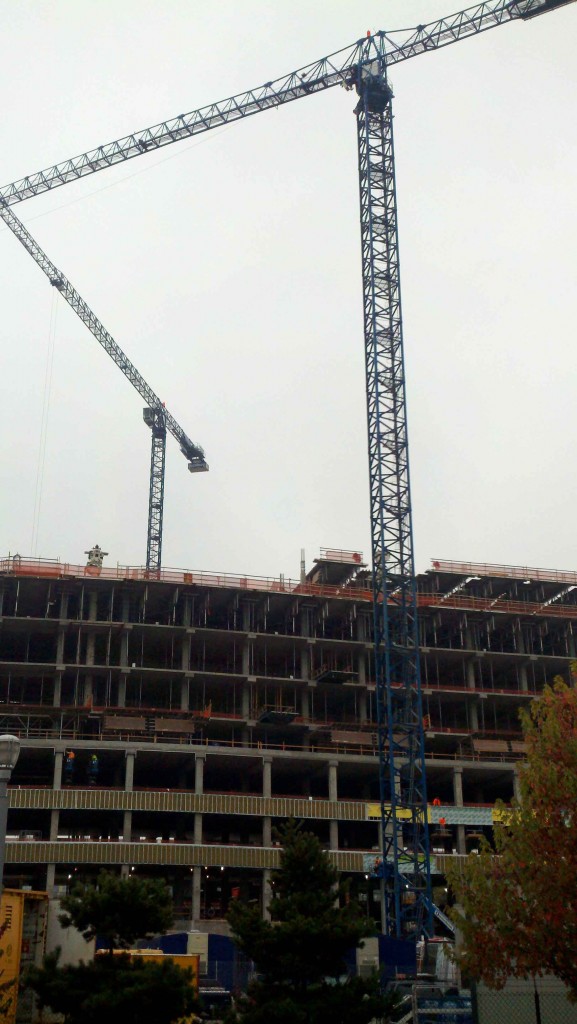
If you really need help with this, or feel like you can’t wait until OSHA publishes more information, email or find me here and we can discuss.
Tags: 1910, 1926, CIH, GHS, industrial hygiene, MSDS, OSHA, rule, rules, safety, safety data sheets
Mon 17 Sep 2012
Posted by admin under Air Monitoring, Asphalt, Silica
Comments Off on Silica in asphalt

For people who work with asphalt everyday, this may be a obvious statement: Silica is in asphalt.
There are two areas where this might be of concern: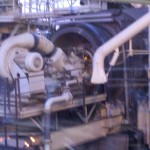
- During the mixing of the asphalt there is usually some ratio of rocks that are added to the product. The size of these rocks is where safety personnel should have concerns. If they are adding the smallest fraction of rock to the mix, you may have airborne exposures to silica. This size of rock is called P200 (or, using a 200 sieve screen to get anything less than 200 parts per inch). Usually this is seen during the transfer of rock from the loader or from the belt conveyor.
- The other method of exposure to silica in asphalt is if you cut it. Rocks may contain silica. When asphalt is cut, you incidentally cut through various rocks (contained within the asphalt). Silica (and dust) is released during the cutting. Please use water when you are cutting asphalt. Direct the water at the blade.

Tue 11 Sep 2012
Posted by admin under Admin Controls, Engineering Controls, Silica
Comments Off on Do you use a hands free mobile device?
While doing airborne silica sampling I noticed this industrious employee using not one, but TWO hands free mobile devices. This guy can multitask!
I think flip phones might be making a comeback.
